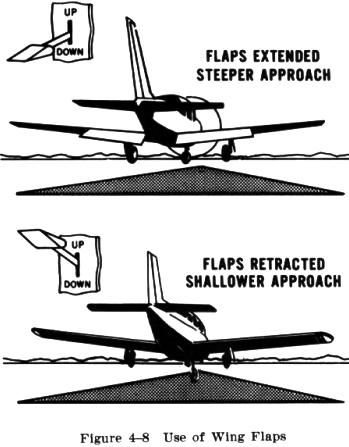Extending and retracting the flaps has a very noticeable effect on the airplane's performance. With a constant power setting while maintaining level flight, the airspeed will be lower with flaps extended because of the drag they create. If power is adjusted to maintain a constant airspeed while in level flight, the airplane's pitch attitude will usually be lower with flaps extended.
When the flaps are extended, the airspeed should be at or below the airplane's maximum flap extended speed (Vfe), because if they are extended above this airspeed, the force exerted by the airflow may result in damage to the flaps. If the airspeed limitations are exceeded unintentionally with the flaps extended, they should be retracted immediately regardless of airspeed.
It is extremely important that the pilot form the habit of positively identifying the flap control before attempting to use it to raise or lower the flaps. This will prevent inadvertently operating the landing gear control and retracting the gear instead of the flaps, particularly when on or near the ground.
